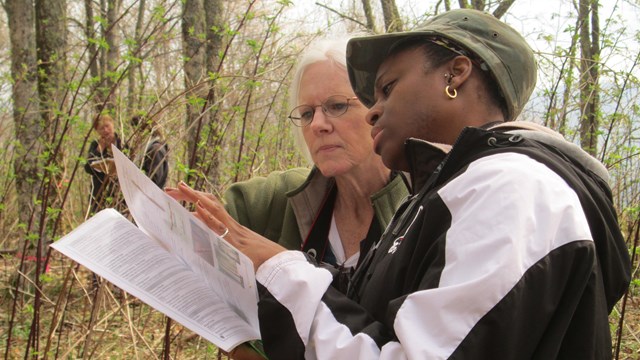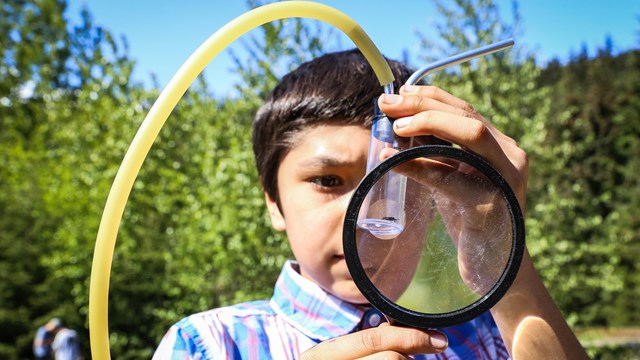
NPS/Jami Belt
Beyond park-focused resource stewardship, public involvement in science is essential for our society. The biggest challenges we face – from climate change to the emergence of artificial intelligence, global pandemics to the accelerating extinction of species – are deeply connected to scientific knowledge and science-based solutions. Creating a future that people want and that our descendants will experience, requires a diverse public who can understand, knowledgeably critique, and contribute to the scientific enterprise.
Furthermore, a scientifically knowledgeable and engaged public strengthens democracy. Science itself is a democratic way of knowing. Anyone, not just a king or other authority, can use observations and reason to make a claim, or to criticize observations and reason to make a counterclaim. Having and practicing the habits of scientific thinking is to practice a democratic way of engaging with the world. Citizen science provides the public the direct experience and skills of anti-authoritarianism. Citizen science projects are part of the toolbox that parks and partners use to foster an informed, knowledgeable, and engaged American public.
Participants play an important role in helping the National Park Service manage the resources and places that they care about. If there’s an “-ology,” there’s probably a science project inviting public participation. Archeology, biology, geology, ornithology, paleontology, and phenology are just a few. Learn more on the National Park Service’s Citizen Science website.
Citizen science is different from education or volunteer stewardship programs. Members of the public who participate in science collect and process data that creates new knowledge and informs park management decision-making. Conversely, a curriculum, lesson plan or activity that is educational but does not focus on gathering new information is not citizen science. And volunteer stewardship activities like removing litter or invasive plants are also not citizen science projects. The key difference is the collection and processing of new scientific data by the public for the purpose of creating new knowledge.
A citizen science project typically includes members of the public (who may or not be official ”Volunteers in Parks”), resource or discipline specialists, and NPS staff. A NPS staff member, often in collaboration with a partner (like a university) are the project directors. They consider the need and use for data. They decide on a research question, the methods and tools to collect data, and project goals. They recruit the public – who might be park visitors, student groups, local community members, or even folks at home – to collect new data or assist with other aspects of the scientific process. The project directors get good data (a.k.a.: data quality control) by training and mentoring participants.
Other projects are instigated and led by a community, and professional scientists and NPS technical experts help the community address its priorities. They constitute community science. For examples, and further information about the distinction between citizen science and community science, read about recent projects.
The NPS is dedicated to making science inclusive to all and ensuring that every person has the right and the opportunity to participate in scientific research. The best way to learn about science is to do science. Join us!

Park Projects
Learn about citizen science projects happening in parks.

Get Involved
Learn how you can join citizen science projects with NPS and across the country.
Last updated: August 14, 2024
